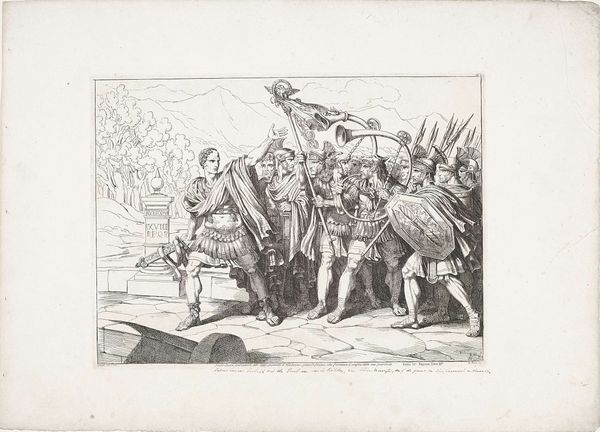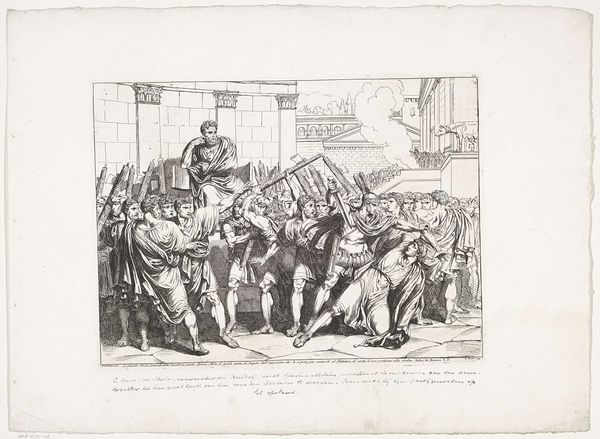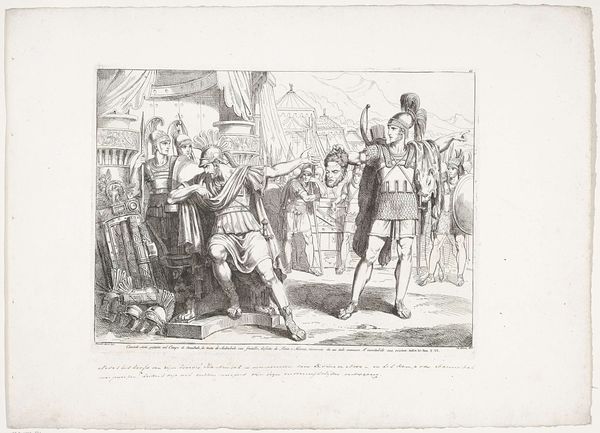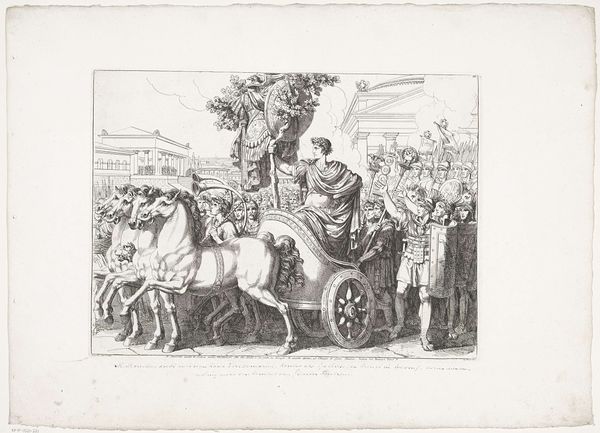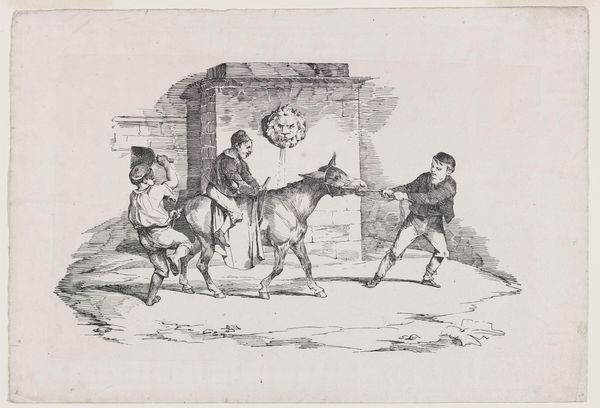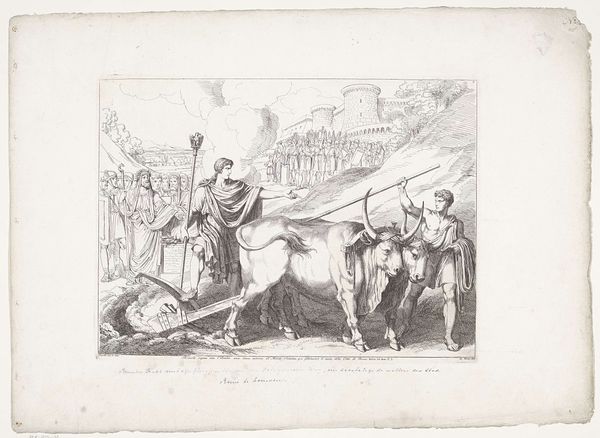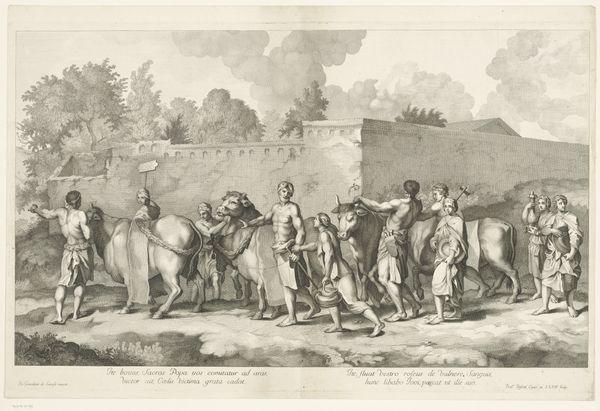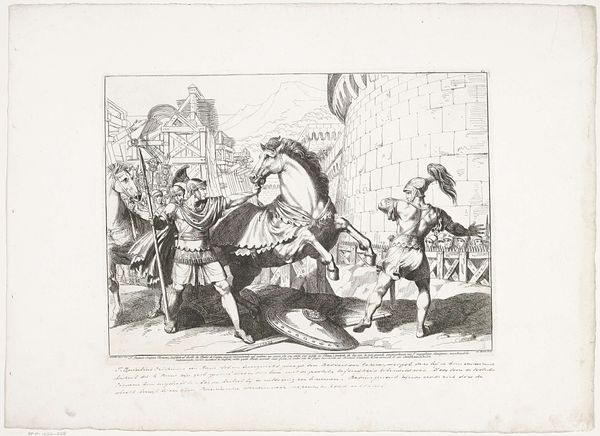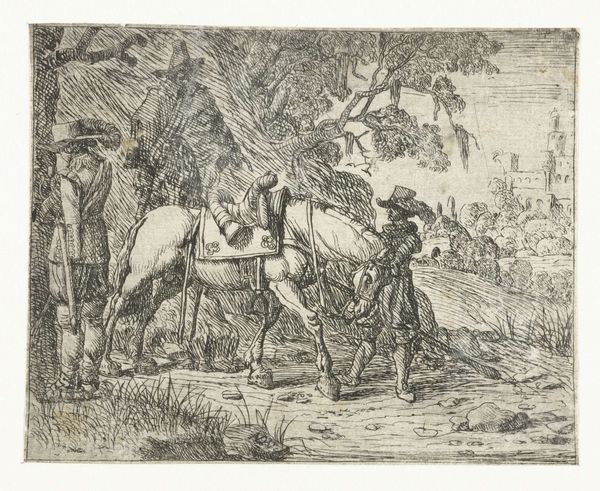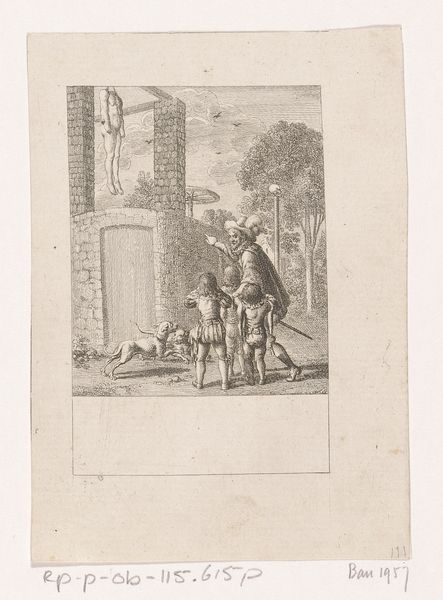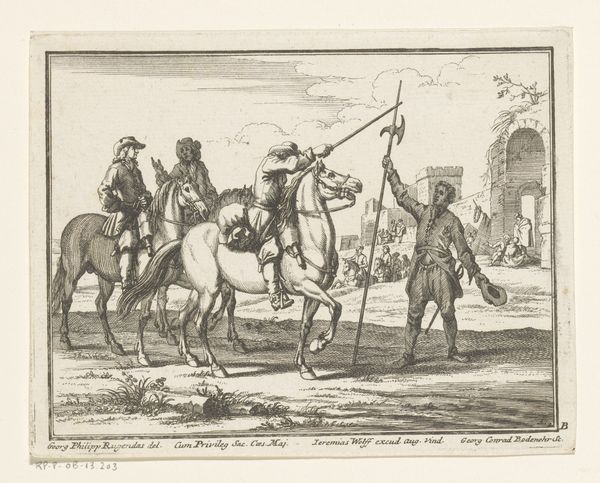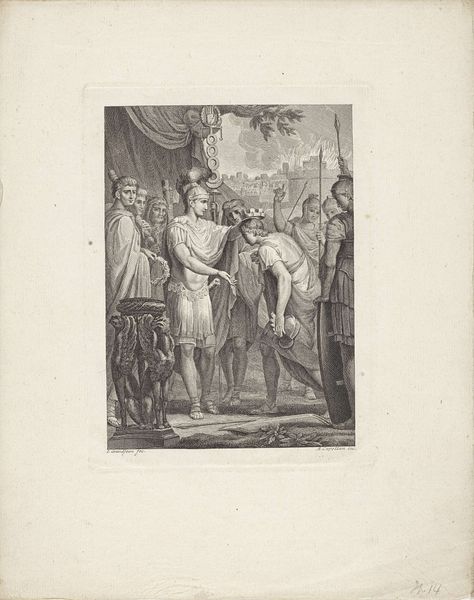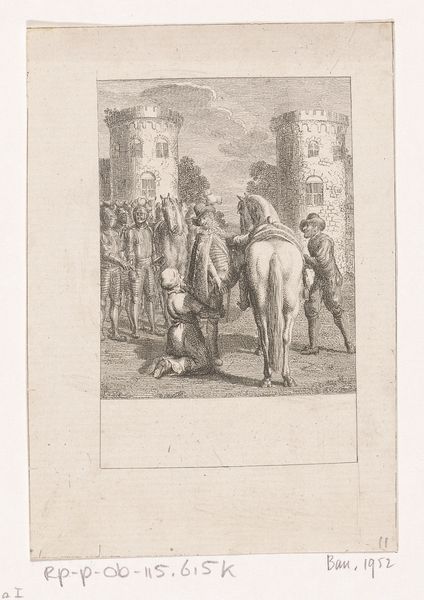
#
light pencil work
#
pen sketch
#
pencil sketch
#
old engraving style
#
personal sketchbook
#
ink drawing experimentation
#
pen-ink sketch
#
pen work
#
sketchbook drawing
#
sketchbook art
Dimensions: height 314 mm, width 421 mm
Copyright: Rijks Museum: Open Domain
This print by Bartolomeo Pinelli depicts Hannibal's envoy presenting Roman prisoners, a stark image of power and subjugation. The laurel wreath, adorning the ambassador’s head, traditionally symbolizes victory and triumph. Consider, however, how this symbol has migrated through time. Initially a marker of Apollonian glory in ancient Greece, it was adopted by Roman emperors to signal divine status. Note the statue of the lion in the foreground, a symbol of strength and courage. These symbols have carried emotional weight through the ages. The power dynamic is palpable, the envoy pointing commandingly, a gesture that echoes in countless depictions of authority. These symbols have been passed down through history and been adapted to new socio-political contexts. Such gestures stir deep psychological resonances, tapping into our collective memory of dominance and submission. Even today, these archetypes persist, underscoring the cyclical progression of power and its visual language.
Comments
No comments
Be the first to comment and join the conversation on the ultimate creative platform.
